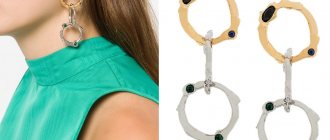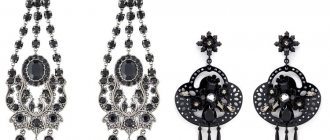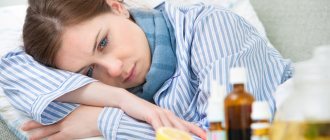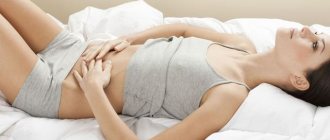It is a rare woman who does not wear these jewelry, which can greatly change both her face and her style.
Some people love bright, massive earrings with lots of rhinestones, some prefer bright handmade jewelry, some wear exclusively exclusive jewelry from famous jewelers, some like small shining carnations.
Cupronickel, silver, titanium, gold, platinum... Earrings can make a woman simply irresistible, and at the same time, it is precisely these favorite jewelry that can cause discomfort and pain.
Unfortunately, sometimes it happens that your favorite earrings, which used to be an integral part of your look, suddenly begin to cause pain and irritation so severe that your ear piercing begins to fester. If the problem has gone that far, then action must be taken.
If pain has just begun to appear, it is necessary to find out its cause as soon as possible. Why your favorite earrings hurt your ears: internal factors
Only a doctor can explain where the pain comes from. Most likely, this is how the body reacts to certain changes in it. For example, your ears may begin to hurt due to hormonal changes. Such disorders can occur during pregnancy, after childbirth, during menopause, or after significant weight loss. The body can also experience hormonal changes due to diseases of the internal organs: ovaries, adrenal glands, thyroid gland.
Due to the fact that hormonal levels are disrupted, allergic reactions may occur. Pain when wearing earrings is one of the allergic manifestations.
As you know, in this case, the most important rule of treatment is to limit contact with the allergen. That is, your favorite earrings will have to be removed and put into a jewelry box until the main cause of the discomfort is clear.
Most often, allergies are caused by simple metals. But it also happens that your ears hurt from silver earrings or gold items. Very often, the appearance of pain in earlobe piercings is provoked by some external influences. External factors causing pain in ear piercings
Ear piercings may begin to hurt immediately after they are performed. The causes of pain can be very different:
The ears were pierced by a non-professional technician who performed the procedure incorrectly and touched an important point in the earlobe or a vessel.
It is for this reason that ears often hurt from gold earrings, and not just from ordinary ones. The most effective method in this situation is to take out the earrings and let the puncture heal, so that you can pierce your ears again. Another factor that can provoke discomfort when wearing earrings can be their change. At the same time, it is not at all necessary to wear new jewelry all the time. Sometimes it is enough to wear earrings made of a different material or even with a different clasp once for a very short time, so that your ears begin to hurt from any earrings. This happens because at the site of contact between the sensitive skin of the puncture and the metal that irritates it, a small inflammatory process develops, which can eventually become chronic.We draw attention to the fact that nature simply endows some girls with especially sensitive skin. It is these representatives of the fair sex who most often have problems with the pain of pierced ears. For those who consider themselves to be in this category, it is better to refuse earrings.
Ears often begin to hurt when earrings are not worn for a long time, but are worn occasionally. In such a situation, it is recommended to purchase comfortable small earrings with bows, preferably made of gold, and wear them as an everyday option, so that on a holiday there will be no problems with larger jewelry.
What to do if your ears hurt from earrings
Whatever the reason for the discomfort, you should never tolerate it. Even in the absence of any external manifestations of inflammation, such as redness or swelling, pain in ear piercings is a signal of some problems.
Such a wonderful decoration as earrings are an integral part of the image of every representative of the fair sex. After all, thanks to earrings, you can not only emphasize your beauty, but also express your individual style. Unfortunately, sometimes there are problems when... Why your ears hurt and how to avoid painful sensations is, of course, worth asking your doctor about.
From childhood, many girls were told by their mothers that after their ears were pierced, they did not hurt and did not become as big as an elephant’s, they must wear gold earrings. Of course, there is some truth in these speeches, since gold is considered the most hypoallergenic material, so the earring that is inserted into the puncture site should be gold to prevent suppuration.
In fact, even if the earrings are made of the purest gold, until the puncture is completely healed, the ear must be disinfected two to three times a day. If after three days healing has not occurred, but remains as it was, even becoming even stronger, this indicates that:
- Most likely, the puncture in the earlobe was made incorrectly;
- the correct earring model is chosen;
- perhaps the girl’s skin has a supersensitive ability;
- infection;
- if your ears have been pierced for a long time, but earrings are not worn often.
Inflammation after puncture
Punching the soft tissue of the lobe is a practically safe, but still traumatic operation. Therefore, most often the ear hurts after an earring piercing. The master should explain what to do immediately after the manipulation. He gives brief instructions on how to care for the canal, what earrings to wear and how often to treat the affected area.
However, even if you follow all the recommendations, your ear will hurt for some time. The healing process can take up to 6 weeks, depending on the individual characteristics of the body, and painful sensations will persist throughout this time. During the first days after the piercing, the earlobes will be red and swollen. This is normal as they swell after injury. But then the redness and swelling should go away.
If this does not happen, it means that some kind of infection has entered the canal, which caused an inflammatory process. If you do not fight it, then ulcers will begin to form, which will continue to spread.
Sometimes prolonged, longer-than-usual redness may be caused not by infection, but by other reasons, for example:
- severe injury to the earlobe due to the use of the wrong instrument;
- disorders of lipid metabolism in soft tissues;
- blockage of the canal with the secretion of sebaceous glands.
Such problems can be eliminated through careful care of the injured area. But if pus is visible and there is severe swelling that does not subside for a long time, then the matter is clearly an infection. And it is necessary to fight it.
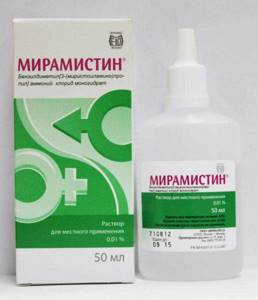
After sinusitis the ear gets clogged
If your ear is blocked due to sinusitis, you need to know what to do to avoid possible complications. This kind of phenomenon is not uncommon. This is due to the close connection between the organs of the ear-nose-throat system. The sooner appropriate measures are taken, the sooner complete recovery will occur.
Characteristic symptoms and connection with the hearing organs
If a person catches an infection and, as a result, develops one or another disease that affects the ear-nose-throat organs, the risk of inflammation spreading to neighboring tissues exists until recovery.
Such a phenomenon as ear congestion due to sinusitis is a consequence of a close connection within the system.
It is quite easy to notice congestion based on the following signs:
- feeling of pressure in the ear and head; deterioration of sound perception, its distortion; autophony; feeling of ear fullness; monotonous noise of a subjective nature.
If discomfort occurs after a runny nose or sinusitis, these symptoms may include headaches, difficulty breathing, fever and dizziness. If your stuffy ear starts to hurt, you should check with a doctor, as there is a risk of developing otitis media or another similar disease.
It is not surprising that with sinusitis the patient’s ears become blocked. There is a close connection between the organs, which increases the risk of infection migration. In addition, the ear has a specific structure, due to which it becomes dependent on the health of the nasopharynx and sinuses.
With sinusitis, mucus and pus accumulate in the so-called maxillary sinuses. If it is not removed, the inflammation spreads to neighboring tissues. Pressure from swollen areas may block the Eustachian tube. It regulates drainage function and equalizes pressure in the ears.
There is a huge risk of developing eustachitis, as well as pathogenic microflora entering the ear cavity itself through this canal. Nasal congestion also disrupts normal air exchange in the body.
Due to the fact that the ears are blocked by the swollen mucous membrane of the nasopharynx, subjective noise may occur.
After the infection spreads, the ears begin to hurt and a secretion forms in them, which further aggravates the situation. With this course of events, it becomes much more difficult to cure both otitis media and its root cause – sinusitis. That is why it is important to prevent the development of inflammation.
Treatment of sinusitis and removal of ear congestion
To eliminate ear congestion that occurs after sinusitis, it is necessary to get rid of the root cause. Treatment of sinusitis can take a long time, especially if the disease was ignored initially and became chronic.
For temporary relief, you can use vasoconstrictor nasal drops. They will partially relieve swelling of the nasopharynx and open air access to the ears, as well as ensure the removal of excess fluid from them.
After this, you need to take up the task of freeing the sinuses from pus. When its accumulation exceeds the norm, mechanical approaches are used to quickly evacuate secretions. In the initial stages, pus can be drained using a soft catheter.
This is the so-called cuckoo method. The procedure is quite unpleasant and is not always able to solve the problem. To begin with, a puncture of the maxillary sinus is performed. A puncture is made using a special curved needle.
Then a saline solution is pumped into the sinus, which flushes out the secretions.
The doctor also prescribes antibiotics and other anti-inflammatory drugs. They also have an effect on the hearing organs, so partial therapy for ear diseases is carried out at the same time.
If, after getting rid of sinusitis, your ear is blocked again, there are a few more recommendations on what you can do to eliminate this problem. In this situation, it is necessary to pay attention to the condition of the hearing organs themselves and concentrate efforts on their treatment.
To begin with, you should undergo an examination by an ENT specialist to determine what consequences the recent sinusitis has had on your ears. After this, the following procedures may be prescribed:
- blowing the ear canal to normalize the functioning of the Eustachian tube; taking antibiotics if inflammation is detected; physiotherapeutic techniques; removing secretions blocking the ear.
It is important to eliminate any interference that affects the normal functioning of the hearing organs. These may be remnants of pus, as well as growths of connective tissue that arise after otitis media. To prevent such complications, infection should not be allowed to enter the ear from the nasopharynx.
In parallel with these measures, it is necessary to take care of restoring your own immunity, since after exposure to antibiotics the body noticeably weakens. This increases the risk of a repeat episode of the disease.
Timely consultation with a doctor, compliance with all his recommendations and effective treatment of sinusitis is the key to a successful outcome of the disease. By responding quickly to the problem, it will be possible to avoid the development of diseases that can affect the quality of hearing. So don’t delay, make an appointment with an ENT doctor right now.
What to do if your ear is blocked due to sinusitis
Ear congestion is a feeling as if there is a plug in the ear canal, with decreased hearing and impaired auditory perception. The symptom occurs against the background of ongoing or previous sinusitis. This condition is due to the anatomical proximity of the respiratory and hearing organs, so the disease can be complicated by the spread of infection to the ears.
Ear congestion during sinusitis cannot be ignored, as this becomes the cause of the development of serious pathologies. This is a complication that requires immediate medical attention.
Causes of congestion
The organ of hearing consists of three sections: external, middle and internal. Why does congestion occur after sinusitis? The middle ear cavity is connected to the nasopharynx through the Eustachian tube, which is a communicating canal.
It ensures the balance of average pressure on both sides of the membrane.
When the mucous membrane of the nasal cavity and maxillary sinuses becomes inflamed, the infection spreads to the auditory tube, which leads to a narrowing of its walls until the canal is completely blocked.
More often, the spread of the infectious process is provoked by improper blowing technique. Blowing your nose too much creates pressure in the nasal cavity, as a result of which pathological exudate penetrates into the auditory tube, provoking the development of otitis media.
Initially, the patient is bothered by a stuffy ear, a little later this is supplemented by pain, which gradually intensifies.
Often the pathological process is accompanied by the formation of purulent discharge, increased body temperature, and general malaise. If such manifestations occur, immediate medical examination is required.
Only after the exact cause of the pathology is established, treatment is selected.
How to treat
What to do if your ear is blocked due to inflammation of the maxillary sinuses or after an illness, only an otolaryngologist knows. Go to him immediately if a symptom occurs. Self-treatment will aggravate the situation and complicate the course of the disease.
The basis of treatment of the pathological process includes:
- use of ear drops; use of nasal agents with a vasoconstrictor effect; applying special compresses to the affected ear; performing exercises to equalize pressure in the Eustachian tube and middle ear cavity.
Nasal drops
If symptoms of ear congestion occur, doctors prescribe vasoconstrictor nasal drops. Sanorin, Naphthyzin, Vibrocil, Tizin are most often prescribed. The medicine should be instilled into the nasal cavity, not into the ear. This will relieve local symptoms manifested in swelling, which will also have a beneficial effect on the auditory tube and will help get rid of congestion for a while.
Such remedies temporarily eliminate symptomatic manifestations, but do not treat the disease itself. Therefore, their use is regarded as an auxiliary therapeutic measure.
Vasoconstrictor drops are used for no longer than a week. Otherwise, addiction or the opposite effect develops.
Drops in the ear
The main method of getting rid of ear congestion is the use of ear drops. Frequently prescribed drugs of this type include: Rizocin, Otipax, Albucid, Otium, Rivanol. Such drugs are used under strict medical supervision, since some of them contain powerful active ingredients that are irrational to use at the initial stage of disease development.
An effective remedy for ear congestion is a compress based on vodka or saline solution. The procedure is indicated only in the absence of an inflammatory process. A small cotton swab is moistened in the product and placed in the affected ear. To enhance the therapeutic effect, the head is tightly wrapped in a woolen scarf.
Swallowing movements
In addition, special measures are prescribed to equalize pressure in the ear. These are exercises based on strong swallowing-reflex movements. In this way, the plug formed in the ear is pushed through.
Only a doctor can answer the question of what to do if ear congestion occurs due to sinusitis or after an illness. Self-medication is unacceptable, since irrational use of medications can aggravate the disease and add additional problems.
Sources:
//bezotita. ru/simptomy/pri-gajmorite-zalozhilo-uho. html
//nasmorklechit. ru/gajmority/pri-gajmorite-zalozhilo-uho. html
Source: https://prostuda.feedjc.org/posle-gajmorita-zakladyvaet-uho/
What to process
You may be interested in:Indian face cream: composition, application features, reviews
Immediately after the piercing, the ear hurts from the earring, what to do in such a situation? To solve this problem, you need to pay special attention to channel processing:
- Change the antiseptic to another similar drug. For example, if after a puncture a girl used hydrogen peroxide and it did not help, then you need to add other medications - a solution of furatsilin or miramistin.
- To reduce inflammation, special antibacterial ointments and creams are often used. They don't always help. If changing medications does not help, you need to consult a doctor. Perhaps he will recommend tests to determine the causative agent of the infection in order to prescribe more accurate therapy.
- In parallel with all these actions, it is worth contacting an allergist to identify reactions to certain types of metal. If this is the problem, then the earrings will have to be replaced.
When treating the canal, it is recommended to rotate the jewelry so that it does not dry to the soft tissues. This will speed up the formation of the canal and promote better removal of pus and microorganisms from the affected area.
How to care for the puncture site?
It is very important to follow all ear care recommendations given at the salon where the piercing was performed. Wind and cold air can cause prolonged healing and problems. For this reason, your child should wear a hat. In summer, girls usually wear special headbands made of thin knitwear. In addition to the wind, they will perfectly protect against dust and dirt getting into the wounds.
Basic recommendations for home care:
- treating the puncture twice a day (in the morning and before bedtime) with antiseptics or hydrogen peroxide;
- mandatory treatment of wounds with disinfectants in case of contact with dust, dirt or water;
- regularly turning the earring several times a day (from the second day after piercing);
- mandatory use of antibacterial hand soap before each ear treatment;
- taking out the earring a month after the piercing, treating the lobe with hydrogen peroxide and putting it on again after 2 hours.
The most difficult thing to care for is the pierced ears of children under two years of age. They often touch new jewelry with dirty hands and pull on it. For this reason, experts recommend sealing a fresh wound with special medical glue. This remedy will go away on its own after a certain time, but the healing process will not be prolonged, and the wound will not get infected.
If there is heavy discharge from piercing wounds, you can use ointments such as Miramistin or those containing chlorhexidine (Chlorcin, Depantol, Hexicon). The names of these products can often be found in instructions for caring for pierced ears.
Anti-inflammatory drugs
If your ears hurt after wearing earrings, what should you do to solve this problem? If the inflammation is weak, then one of the following drugs can easily cope with it:
You can also use other drugs with antibacterial effects. Doctors do not recommend using only medical alcohol due to the fact that after its use the skin begins to peel off. Although you can wash your earrings in it.
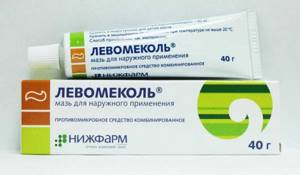
Basal temperature from A to Z
Hi all! I was also puzzled about getting my 10 month old daughter’s ears pierced! I read articles, more advice against punctures for young children. Here's an article if we did get our ears pierced! Here we talk about earrings, about what to wash with, and about misconceptions... 10/27/2009 00:51 When can a child’s ears be pierced? yakozun dad
Ladies, look what piercing professionals write about piercing children's earlobes. I can't help but agree with them. ... The topic of children's piercing has been relevant for decades. By “baby piercing” we mean piercing of the earlobes. Young mothers, apparently in pursuit of fashion or for some reason of their own, strive, almost from birth, to pierce their children’s small ears, and they do not think at all about the consequences. But the consequences are very different: - a small punctured lobe grows over time, but the puncture in it remains in the same place where it was originally, because of this, already at the age of 10, the asymmetry of the punctures is clearly visible in the child, and often the punctures themselves are visible in general look unpresentable; — you can’t explain to a small child that you can’t touch the pierced area, so the very fact of infection through an ear piercing is very serious; — the responsibility for caring for the piercing lies entirely with the parents, but many (let’s say, the majority) have no idea how and what to treat the piercing with, and some are generally afraid to touch the child’s pierced lobes.
All of the above factors do not have the best effect on the appearance of small ears, both during the healing period and in the future, when the child grows up. In specialized institutions (tattoo and piercing parlors) there is no such service as piercing the earlobes of children, and if they do, it is only for the sake of profit. A good piercer will never take responsibility for piercing a child’s lobes, as he understands all the negative factors of this type of piercing at a young age.
Restless parents, having been refused admission to a piercing studio, visit medical centers and beauty salons, where they receive services not from a qualified piercer, but from a person who knows superficially about piercings. In such cases, the child receives a puncture with a pistol (which is very bad, since pistols are not sterilized, and the puncture is torn, not pierced, and an ornament is inserted into the resulting hole - a stud of dubious metal). By the way, manufacturers of piercing jewelry have long abandoned stud-shaped jewelry, since it is not only an inconvenient decoration during the healing period, but also a “container” for collecting various infections due to its structure. In another case, the child is given jewelry made of questionable metal (surgical/medical steel), which can give an allergic effect and will in every possible way impede the healing process. Another common practice is to immediately insert gold jewelry, either purchased at a jewelry store or inherited with large stones and a lot of details. It is also not recommended to insert gold into a fresh puncture, no matter how high the standard it is. Also, often in non-specialized institutions they give incorrect recommendations for care: wipe with alcohol/vodka/peroxide, scroll through jewelry, smear with brilliant green or iodine - all this cannot be done! If you still dream of giving your child ear jewelry, then take note of several recommendations: - the puncture should be made only with a disposable needle, opened in front of you; — the decoration should be in the shape of a ring or a horseshoe. The ring can be with a ball, or it can be segmented (without a ball). A horseshoe is also a ring, only with two screw-on balls. The use of jewelry called labret and microbar is also allowed. — the decoration must be titanium. The use of gold, silver, platinum, steel, and titanium-coated steel is strictly not recommended. — during the healing period (2-3 weeks), you cannot use alcohol-containing solutions and peroxide for rinsing; you need to purchase “Chlorhexidine” or “Miramistin”; you can also use specialized liquids that are sold in piercing salons. - the puncture and jewelry must be treated 3-4 times a day, without turning the jewelry; at night you can lubricate it with an ointment like “Levomekol”, “Tetracycline ointment”, “Bepanten”, “Rescuer”.
ethnoscience
You may be interested in: Special cream “Emolium”: customer reviews, composition and instructions for use
If your ears hurt after wearing earrings, you can turn to traditional medicine. To treat inflammation of the lobe the following is used:
It is important to remember that traditional medicine cannot serve as a replacement for basic therapy with medications.
Care after a piercing
To ensure that your ears do not hurt after a piercing, and that the healing process proceeds without complications, you must follow the following recommendations:
Atheroma
In popular parlance, this is a wen. It is formed due to the fact that the fat glands secrete too much secretion. When this happens, the gland can become clogged and all the sebum remains under the skin. As a result, a dense ball is formed. The lump itself is not painful, although it can reach frightening sizes. However, it is an excellent breeding ground for pathogenic bacteria. And if the appearance of atheroma is accompanied by pain, it means that the inflammatory process has already begun. This problem requires medical intervention.
Allergy
Everyone has allergies to various alloys. Sometimes women complain that their ears hurt from wearing gold earrings. This phenomenon can also occur due to an allergy to gold, despite the fact that it is an inert metal.
Much more often, strong reactions of the immune system occur to other alloys, since as a result of exposure to sweat and secretion of the sebaceous glands, jewelry oxidizes. Oxides irritate the skin and a response occurs. If the pain is caused by an allergy, it is usually acute and accompanied by severe redness and peeling of the skin.
The safest jewelry is considered to be earrings made of medical steel and titanium alloys, as well as noble metals - gold and platinum. Although you may be allergic to them.
Abscess
If your ears hurt from simple earrings, what should you do if such a problem arises? Experts usually recommend treating the earlobe with antibacterial drugs, and for good reason. When the earlobes hurt, any doctor, first of all, suspects an abscess, that is, severe inflammation in the form of an abscess. Most often, this phenomenon occurs immediately after a puncture, when the wound is still open. But it can also occur later, as a response to a traumatic effect, hypothermia, or a complication of an allergic reaction.
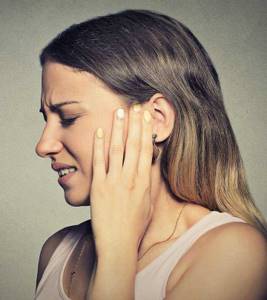
Reviews about the consequences
Reviews on the forums are numerous and very contradictory. For some, the procedure did not cause negative consequences or negativity, while others were sick for a long time and tried a lot of medications and visits to doctors to return their ears to their original appearance. First things first.
Consequences of ear piercing in children
Veronica, mother of a 4-year-old daughter: My daughter dreamed, she simply dreamed of earrings, and I decided to give the little one a surprise for her birthday. I got a puncture done with a gun at an expensive beauty salon. Pre-selected silver earrings were inserted. By evening, my daughter’s temperature rose and a slight swelling and redness appeared. I fulfilled all the requirements of the cosmetologist, but the treatment took a month. I had to give up an expensive accessory.
Referred pain
Sometimes, when pain occurs in the earlobe, it may only be a reflection of a real problem. With otitis media, the inflammatory process occurs deep in the auricle, but the pain often radiates to the lobe. It is quite simple to recognize this phenomenon - simultaneously with pain in the ears, toothache, pain in the facial muscles, and purulent discharge from the auricle may also occur.

Why do the lobes become inflamed after a puncture?

Most often, the earlobe becomes inflamed immediately after a piercing. During this period, it swells greatly and intense pain occurs when touched. In this case, inflammation can be accompanied by discharge of various types, most often purulent. If there is discharge, it is necessary to begin treatment of the complication without delay, since in the future this inflammation can become a provoking factor for various systemic diseases.
In order to determine the root cause of inflammation, you need to contact an otolaryngologist who understands ear diseases and can determine the severity of the process. After carrying out diagnostic measures, the doctor will be able to select the optimal drug to combat the causative agent of the pathological condition of the ear.
Important! It is impossible to independently determine the exact pathogen and its nature - viral or bacterial - without diagnostic tests. For this reason, treatment prescribed at random will most likely not bring the desired result. Such therapy can also cause harm to health.
Inflammation of the earlobe after a puncture does not always indicate the penetration of harmful microorganisms into the wound surface. Often this condition is a consequence of traumatic damage to the integrity of the tissues of the auricle and temporary weakness of the immune system. In this option, to eliminate the inflammatory process, it will be sufficient to regularly use disinfectants and wound healing agents, as well as take vitamin and mineral complexes. This reaction of the body is explained by the following physiological processes:
- during the puncture, the tissue of the auricle was seriously injured;
- lipid balance in the lobe is disturbed;
- the sebaceous glands begin to function more actively;
- the ducts are blocked by the secretion produced.
When there is a suspicion of an infection, it is not recommended to neglect consultation with a specialist.
Important! A puncture of the earlobe can potentially trigger tumor processes, the treatment of which occurs exclusively using surgical techniques. Conservative therapy in this case will not bring the desired result.
Error when punching a channel
Sometimes a woman's ears hurt from wearing gold earrings. What to do in such a situation? If there is a clear understanding that this is not an allergic reaction to a noble metal, which generally happens quite rarely, then perhaps the whole point is that the channel was initially punched incorrectly.
The soft tissue of the earlobe contains few nerves and important vessels, but they are still there. And if the channel hits one of them, the painful sensations will persist even after its formation. They are usually not accompanied by inflammation and swelling, but create discomfort.
You may be interested in:How to make your nose smaller at home: exercises, methods and recommendations
The only way out in this situation is to overgrow the canal and re-pierce it in another place.
Gold and silver earrings - why do they hurt your ears?
Gold is an inert metal. There are almost never allergic reactions to it, although they are possible. Although today, under the guise of real full-weight gold, alloys with an admixture of nickel and copper are often sold. They can cause ear pain.
If your ears hurt from silver earrings, what should you do in such a situation? Silver is a more active metal. It darkens over time due to exposure to body fluids on the skin. The oxide film can also irritate the ears.
But in general, pain from silver and gold jewelry occurs for exactly the same reasons as from products made from simple alloys.
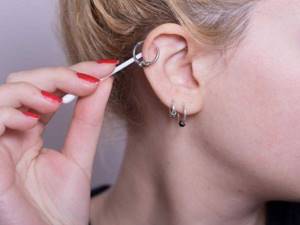
What to do when your ears hurt from jewelry
Regardless of the reasons, the initial actions are the same for any case:
Further actions will depend on what was the cause of the pain. You may have to give up jewelry during treatment or get rid of certain items that were the source of your problems.
How to treat a lobe or cartilage to cure a puncture
To cure an ear piercing, just change the piercing and start treating it correctly. As mentioned above, one of the reasons is poor-quality primary jewelry, especially often jewelry from a piercing gun is the cause of complications.
If ear treatment does not lead to the desired result, then you need to buy a new primary decoration, miramistin and saline solution
The main problem is to understand why it all started, since by getting rid of the cause we will solve the problem. If you are sure that the reason is not decoration, then regular high-quality processing will be enough.


